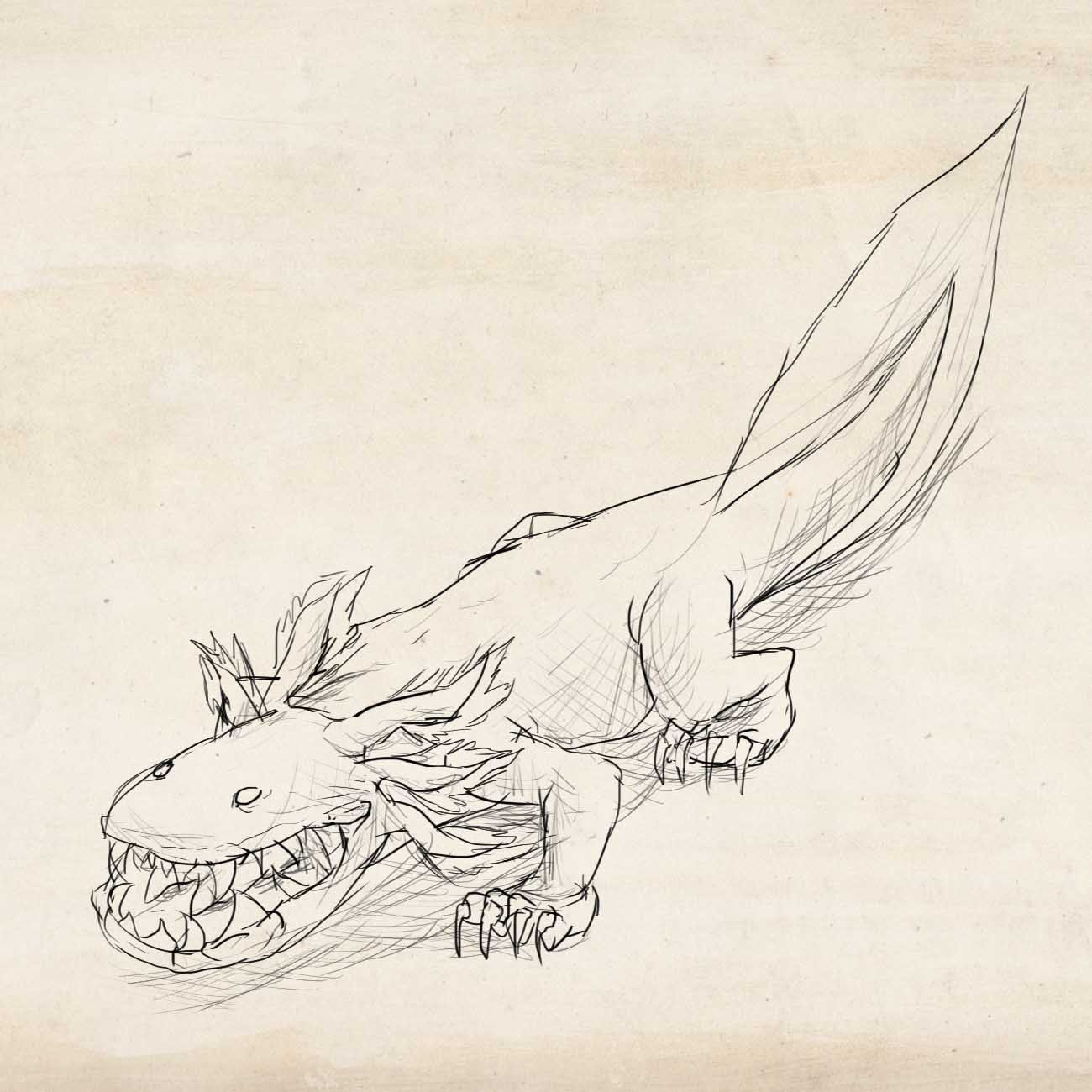Nauapallin
Nauapallins are enormous gilled salamanders residing in the Pits, known for having extremely large jaws with which to dismantle their prey. Because their skin is rather soft, these creatures make use of a regenerative ability, able to regrow any part of their body after it gets dismembered. The only way Nauapallins can be killed is for their head or chest to be punctured, where their vital organs reside.
Basic Information
Anatomy
Nauapallins have long streamlined bodies with soft patchy skin, their legs and tails especially stubby. This species has large round heads, with small eyes, and proportionally large jaws. Their teeth are large and serrated, and their claws to match. On the backs of their heads are three bristled appendages which function as gills.
Genetics and Reproduction
Nauapallins will mate solely on who shows high fitness. When this species plans to mate, they have a mix of both display and conflict. Both male and female Nauapallins will attempt to court each other by displaying their jaws, getting in the other's personal space and lashing out with their teeth. If two males go for the same target, they will brawl with each other for a brief amount of time, attempting to crush the other's heads or chests. If a male in particular shows exceptional fitness, he will be chosen to begin a new generation, and their eggs will be laid in nests made from discarded foliage on the ground.
Growth Rate & Stages
Newborns of this species will be raised by their parents for their whole youths, starting out especially small and nearly blind. The mother will usually be the one to hunt and bring food back to their young, while the father acts as their bodyguard for the time being. Eventually, the young will become a lot more mobile, and will begin swimming around their parents. They will continue to stay in the nest for longer until they grow close to their adult size, where they will then be chased off by their parents and forced to live on their own.
Ecology and Habitats
Nauapallins live in the Halocline Pits of the Nightlight Zone, and can often be found searching for or residing in their hunting grounds. They prefer to hunt in areas with plenty of variation in terrain, nearby the underwater rivers where they can easily kill their prey. If a hunting area does not turn out promising, the Nauapallin will move on to a new area, swimming high above the seabed to do so. Occasionally, they have been found carrying rocks with their jaws to clear out a hiding space, placing them around a reasonable perimeter.
Dietary Needs and Habits
Nauapallins have been known to feed on Vilmacanthids, juvenile Tusked Manatees, and the reserves stored in Sea Beetle hives. Nauapallins will ambush lone juvenile manatees due to being weaker than the adults, biting them on the neck and driving them towards the dense halocline. When suspended in the fluid for long enough, their prey's bones can get crushed from the density, which ends their life and makes the carcass easier to consume by being broken down into small chunks. As for Sea Beetles, they can eat chunks of the hive directly, and regenerate most areas they've been bitten on.
Biological Cycle
Over time, their teeth can get worn down from usage, prompting Nauapallins to sharpen them by gently biting a large rock over and over again. They often do the same for their claws.
Additional Information
Perception and Sensory Capabilities
Nauapallins have very well-developed eyesight, but less developed hearing and smell. Their eyes work just as well when peering through small spaces, such as behind a rock.
Symbiotic and Parasitic organisms
Some extremely small species, excluding Vilmacanthids and Sea Beetles, can be found nearby Nauapallin nests, believed to be because they are not part of their diet. Because Nauapallin parents will attack any large creature that comes near, these small fish and arthropods will be protected by them.
Scientific Name
Ambystoma sagoni
Lifespan
Unknown
Average Weight
1,010 lbs.
Average Length
18 ft.
Average Physique
Streamlined
Body Tint, Colouring and Marking
Black-grey skin, green gills, glowing light blue eyes
Geographic Distribution
High
Remove these ads. Join the Worldbuilders Guild










Comments